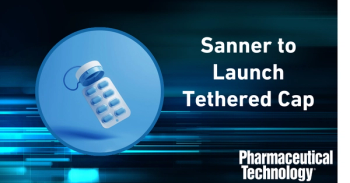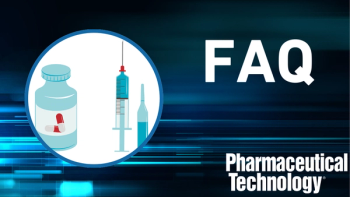
Therapeutic Delivery for Brain-Related Conditions
At BIO 2024 in San Diego, John Dunlop, PhD, chief scientific officer at Aliada Therapeutics, sat down for an interview with Pharmaceutical Technology to discuss the firm’s MODEL platform and its potential impact on therapeutic delivery for brain-related conditions.
[Editor’s note: This interview has been lightly edited for brevity and clarity.]
At BIO 2024 in San Diego, John Dunlop, PhD, chief scientific officer at Aliada Therapeutics, sat down for an interview with Pharmaceutical Technology® to discuss the firm’s MODELTM platform and its potential impact on therapeutic delivery for brain-related conditions. The platform leverages highly optimized protein domains that target the transferrin receptor (TfR) and CD98 receptor, which are key for transporting agents across the blood-brain barrier.
PharmTech: Can you tell us about Aliada’s MODEL platform and discuss the science driving this novel approach?
Dunlop: Starting with the name, the term MODEL stands for Modular Delivery, which I think speaks to the breadth and flexibility of our platform. We have several design tools with the key components of the MODEL platform being highly optimized protein domains that bind to either the transferrin receptor or the CD98 receptor. These are both highly expressed on brain endothelial cells and are responsible for transporting physiological agents across the blood-brain barrier: transferrin via TfR and CD98 as part of a heterodimer of the large amino acid transporter. We take advantage of those by engineering highly optimized TfR or CD98 binders that we can then use to attach to different types of cargo. The cargo can be therapeutic antibodies, or enzymes for enzyme replacement therapy, for example (See Figures 1-2).
We are also placing a major strategic focus on oligonucleotide therapeutics. The current standard of care is to deliver these through an intrathecal route of administration. Our premise is that we can generate antibody-oligonucleotide conjugate scaffolds using the TfR or CD98 delivery modules, which allows for the potential of a peripheral route of administration via IV—maybe even subcutaneous in the future—and achieve target knockdown of a particular gene of interest in the brain. We are solving one of the big challenges with this direct intrathecal delivery, which is very invasive and associated with numerous toxicities.
The MODEL platform contains a number of different components. The workhorse delivery module is a single chain Fv, a component of the antibody that typically binds to the antigen. We have stabilized that through proprietary stapling technology. Those protein domains are typically inherently very unstable, so that is one of our true differentiators. The fact that it is just a single chain Fv gives us the ability to attach it to different types of cargo in a very flexible way. Finally, there are several different antibodies we utilize like scaffolds, one of which we call the mono IgG. It has a single Fab arm that is addressing either TfR or CD98. The importance is that with the Fc retained there, you can use it as “real estate” where you can conjugate things like oligonucleotides. We are starting to do a lot more work in that area to really build that up.
PharmTech: What are the main areas of focus as Aliada develops its MODEL platform?
Dunlop: The first is reducing the platform to practice, particularly around RNA therapeutics, and that'll be both in the field of siRNA as well as antisense oligonucleotides.
And then the other primary focus is our lead program [ALIA-1758], which is an antibody-based therapeutic that is enabled with our transferrin single-chain Fv delivery module, developed for early Alzheimer's disease. It is an amyloid beta (Aβ) targeted antibody that targets the pyroglutamate forms of Aβ. These are highly aggregate-prone forms of Aβ and are very much expressed in the plaques in the human brain. It is the same epitope that is targeted by a molecule called donanemab which is in development by Eli Lilly.
We have engineered some important attributes that I believe will differentiate us from donanemab. In terms of the pyroglutamate binders, we have a significantly increased affinity for pyroglutamate compared to donanemab. Additionally, we have configured the molecule with our single-chain Fv transferrin brain shuttle, so we get much more of the antibody delivered into the brain. With these two factors, we believe we could have a once-monthly, subcutaneous administration at a very low dosage level. Other agents in the field are IV administration, so you need to go into an infusion center and spend time there. We think we can really bring what could be a best-in-class asset to Alzheimer's patients.
The exciting part there is that we are imminently about to start our clinical trial. It will be a single ascending dose study in healthy volunteers to understand safety, tolerability, and initial pharmacokinetics. That will set us up ultimately to then do a multiple ascending dose study in Alzheimer's patients. It will be very exciting for us to be able to say we are a clinical-stage company, and that's going to happen very soon.
PharmTech: Are you excited about the seemingly accelerating progress in the Alzheimer’s disease field in recent years?
Dunlop: I think there has been just tremendous progress in the Alzheimer’s disease space. Biomarkers now really make us very confident that subjects coming into trials already have evidence of amyloid pathology in the brain, because we can look at it through PET imaging and we can measure different beta-amyloid and tau species in the blood that are also correlated with those PET images. When you think back to the initial trials of some of the initial Aβ antibodies almost 30 years ago, about a third of the subjects who were enrolled in those trials didn’t actually have amyloid pathology in their brain, which we learned when they passed away. They had some other type of dementia, instead. This factor was diluting the potential to see a signal in a clinical trial. Now we can very definitively recruit subjects with Alzheimer’s disease, and we are very biomarker-enabled to track the progress of our therapeutics. So, we’re very excited to be starting our clinical program very soon.
Newsletter
Get the essential updates shaping the future of pharma manufacturing and compliance—subscribe today to Pharmaceutical Technology and never miss a breakthrough.





